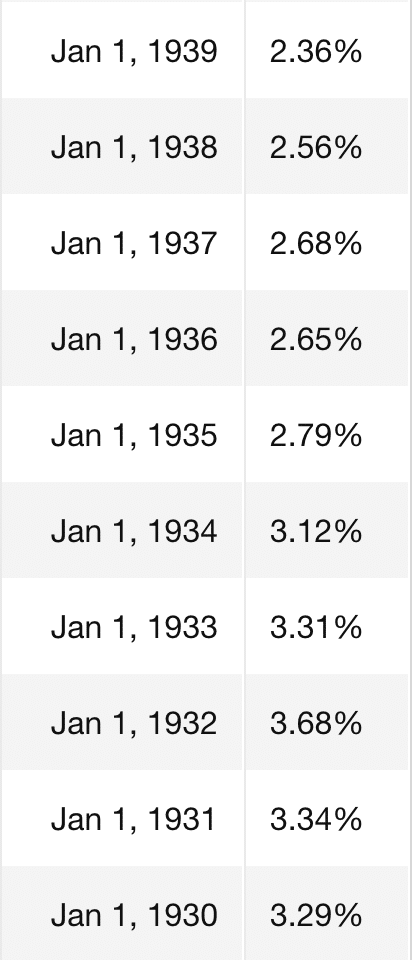If you’d like to listen to this post rather than read it, you can do so here or subscribe to The Goldmine podcast:
When there is a stock-market boom, and everyone is scrambling for common stocks, take all your common stocks and sell them. Take the proceeds and buy conservative bonds. No doubt the stock you sold will go higher. Pay no attention to this – just wait for the depression which will come sooner or later. When this depression – or panic – becomes a national catastrophe, sell out the bonds (perhaps at a loss) and buy back the stocks. No doubt the stocks will go lower. Again pay no attention. Wait for the next boom. Continue to repeat this operation as long as you live, and you’ll have the pleasure of dying rich.
That’s Fred Schwed Jr. in his canonical book about Wall Street ‘Where Are the Customers’ Yachts?’ which is on my all-time top ten list of books to read to understand the markets (and laugh your ass off while learning).
But it’s shitty advice. Fred’s book chronicled the misadventures of the firm’s he’d been in and out of over the previous few decades – first as a trader (until the Crash of ’29) and then as bemused observer. Think about the interest rate environment in the ten years leading up to 1940 when the book came out:

So when you switched out of common stocks and into bonds, you had a fighting chance at earning a positive return. These are nominal interest rates on 10-year Treasurys. These rates were considered low at the time, because the country had spent the 1930’s fighting deflation and depression. These days, we have even lower rates but no such deflation or depression (although it probably feels like a depression for people working in specific industries like hospitality, travel and leisure, it is very far from a depression in the aggregate).
A lot of what’s driving the SPAC boom and the venture capital boom and the securitization and speculation in things like collectible cars and baseball cards and luxury goods is the fact that there’s cash everywhere looking for a return that’s above the risk-free rate, which is essentially zero.
Peter Boockvar wrote about a Wayne Gretzky card that’s currently going through the zero rates distortion factory:
In a world of $18 Trillion of negative yielding bonds, along with zero rates in the US and elsewhere and central banks gobbling up every bond they can find, the desire for those things in limited supply is not just for bitcoin or gold or a vintage Ferrari and a piece of art. Sports collectibles qualify as well. Last Thursday a Wayne Gretzky rookie card from O-Pee-Chee in perfect condition, rated 10 by PSA, was auctioned off for $1.29mm. This same card sold for $465k in August 2016. The Topps version in also the same gem mint condition sold for $720k vs the $200k it went for also in August 2016. While it’s technically a ‘paper’ asset, or actually cardboard, it really is a hard one that looks more attractive in the upside down world of monetary madness.
Had you followed Fred Schwed’s maxim for dying rich, you’d have been out of stocks long ago. And yes, you’d have watched them grow and grow and grow again in value. The “pay no attention” part would have been impossible to heed. Especially as the cost of everything around you had risen concurrently while the interest on your bonds yielded a negative number in real terms – adjusted for the actual inflation you’re currently experiencing in your actual life.
It’s also important to mention that in Schwed’s day you were probably going to “die rich” in your sixties or, if you were very fortunate, in your seventies. These days, retirement starts at 65 and then one out of four people makes it 95! Imagine having to fund a 30-year retirement with 10-year Treasury bond starting yields at under 1%. It’s not an option. Unless you’re planning on being a burden to your own children.
Also, in Schwed’s day, all of the incentives on Wall Street revolved around convincing the customers to transact. To buy AND sell. There’s no commission until someone buys or sells. Holding is terrible for business. These days it’s the opposite. All of the incentives are based on customers not selling and staying put. Trillions of dollars at stake. The whole business model in 2020 is a 180 degree revolution from Schwed’s era. I first revealed this enduring stock market catalyst in The Relentless Bid, Explained. It’s still true. It’s even more true.
Stocks are rising and no one is selling. They feel as though they can’t.



